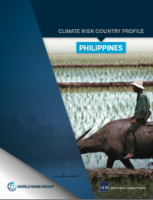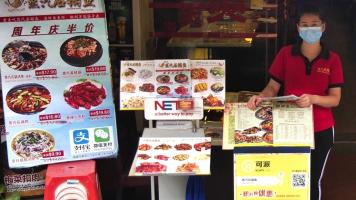
Integrating renewable energy from different sources, such as solar and wind farms, at different places will require power systems to be more flexible and smarter. Photo credit: ADB.
Interconnecting power grids in the region is a key strategy in strengthening energy security and transitioning to renewables through efficient resource sharing.
Interconnecting power grids in the region is a key strategy in strengthening Southeast Asia’s energy security and transitioning to renewables through efficient resource sharing. This is even more critical in today’s energy crisis, which affects households, businesses, and economies, slowing their recovery from the COVID-19 pandemic.
The transmission of renewable energy to Singapore from the Lao People’s Democratic Republic (Lao PDR) via Thailand and Malaysia last June marks a milestone in cross-border electricity trade in ASEAN.
The Lao PDR–Thailand–Malaysia–Singapore Power Integration Project serves as ASEAN’s pilot in addressing technical, legal and financial issues of multilateral electricity trade. It can supply up to 100 megawatts (MW) of hydropower from the Lao PDR. Initially, the power was being delivered only to Malaysia, but it is now being supplied to Singapore too.
Multilateral power trading
ASEAN’s vision is to integrate the national power systems of its 10 member states to enable power trade. The ASEAN Centre for Energy says enhanced integration through the ASEAN Power Grid could “avoid adding 154 MW of capacity, saving $1.87 billion, by 2025,” citing estimates of a 2010 study.
The International Energy Agency (IEA) says energy demand in the region is set to grow by around 3% a year to 2030, with three-quarters of that increased demand being met by fossil fuels, based on today’s policy settings. Without stronger policy action, Southeast Asia’s net oil import bill, which stood at $50 billion in 2020, is set to multiply in size rapidly if high commodity prices endure.
It is critical for countries to improve energy efficiency, accelerate renewable power generation, and switch to low emissions fuels. “Regional integration and multilateral power trading can also help increase power system flexibility in Southeast Asia. This would expand balancing areas, allowing for efficient resource sharing, particularly for renewable resources,” adds IEA in its latest report.
Developing the regional infrastructure
Building the ASEAN Power Grid, however, is a major undertaking that entails the development of hard and soft infrastructure, including transmission facilities and electricity trading mechanisms.
Power trade in the region started at the bilateral level and is envisioned to scale up to trade within three subregions—north (ASEAN countries in the Greater Mekong Subregion), south (Malaysia and Singapore), and east (BIMP-EAGA countries).
Interconnection projects that support the ASEAN Power Grid include the Trans-Borneo Power Grid Sarawak–West Kalimantan Interconnection Project in the BIMP-EAGA subregion, which was commissioned and energized in January 2016. The project built a 275-kilovolt grid-to-grid transmission line between Sarawak in Malaysia and West Kalimantan in Indonesia on the island of Borneo.
Last year’s signing of the Sabah–Sarawak Power Interconnection Power Exchange Agreement between SESCO, a subsidiary of Sarawak Energy Bhd, and Sabah Electricity Sdn Bhd paves the way for establishing the Borneo Grid and the ASEAN Power Grid.
Technical and financial barriers
Several challenges lie ahead before the ASEAN Power Grid can be realized. These include overcoming technical and financial barriers.
In a podcast interview with the Asian Development Bank Institute, ASEAN Centre for Energy Executive Director Nuki Agya Utama says “the next challenges will be adding a submersible line from Singapore to Sumatra, Kalimantan, Malaysia, Sabah, Sarawak, and Brunei to the Philippines.”
He says deploying a submersible high-voltage line, which is quite costly, is one of the technical challenges. “However, the latest studies between Singapore and Sarawak authorities have revealed the possibility to transfer it both ways—from Singapore to Sarawak and from Sarawak to Singapore. It showed a very good result in feasibility studies.”
Another challenge is that ASEAN member states will need to invest in transmission grid upgrades “to absorb the high penetration of variable renewable energy,” he adds. “Of course, the grid should be able to transfer power to areas where the demand is. Those are very complicated.”
The variable and intermittent nature of wind and solar power generation makes it challenging to integrate these renewable sources into traditional power systems and maintain a reliable supply of electricity. The traditional large-scale electricity delivery system is centralized and unidirectional. Integrating renewable energy from different sources, such as solar photovoltaic farms and wind farms, at different places will require power systems to be more flexible and smarter.
This story was first published by BIMP-EAGA on 22 September 2022.

BIMP-EAGA
The Brunei Darussalam–Indonesia–Malaysia–Philippines East ASEAN Growth Area, or BIMP-EAGA, is a cooperation initiative established in 1994 to spur development in remote and less developed areas in the four participating Southeast Asian countries.


